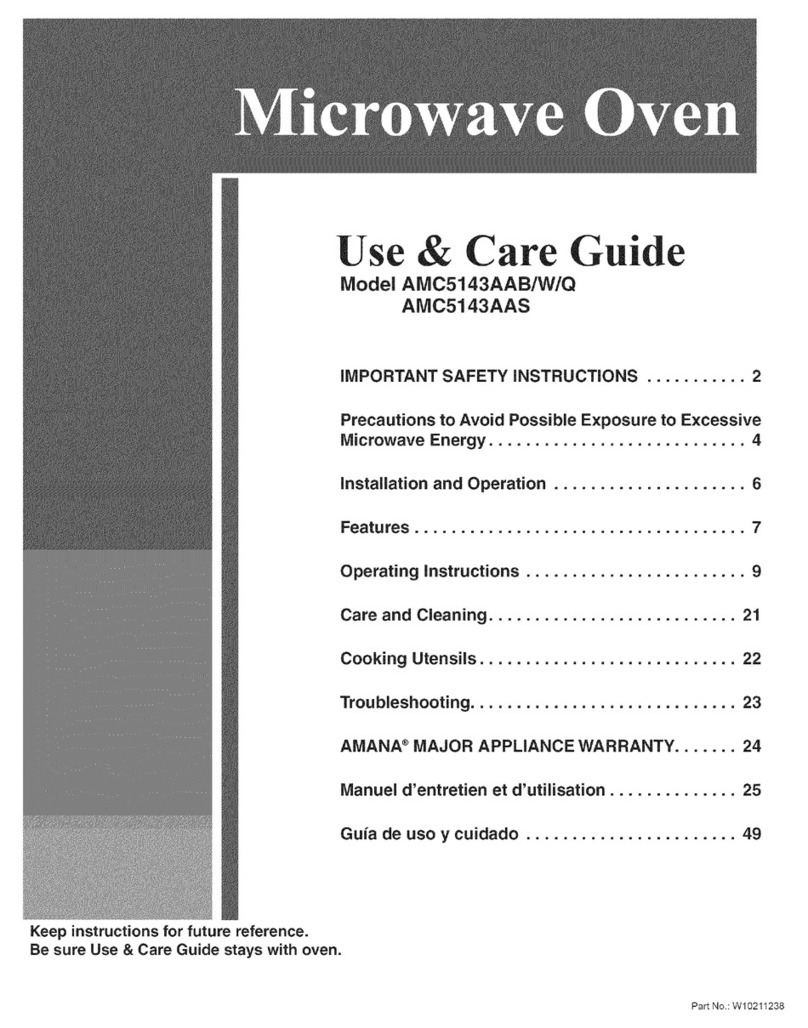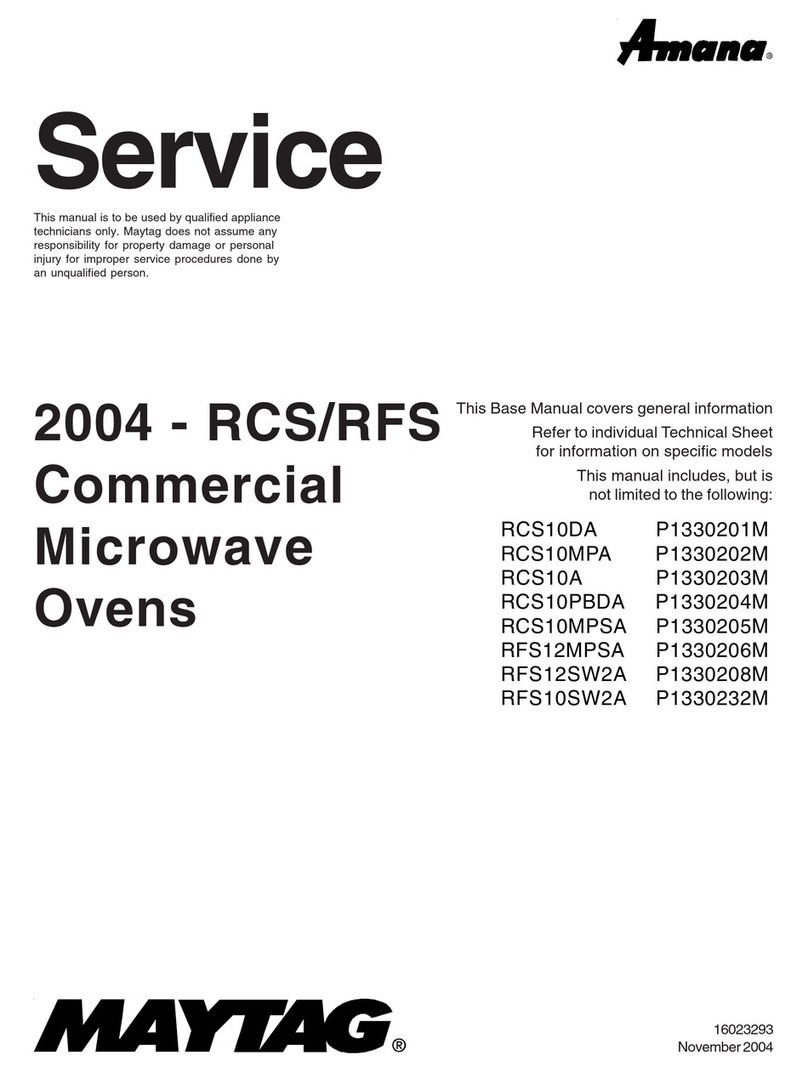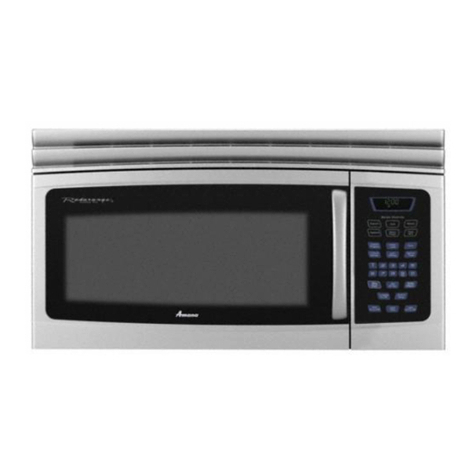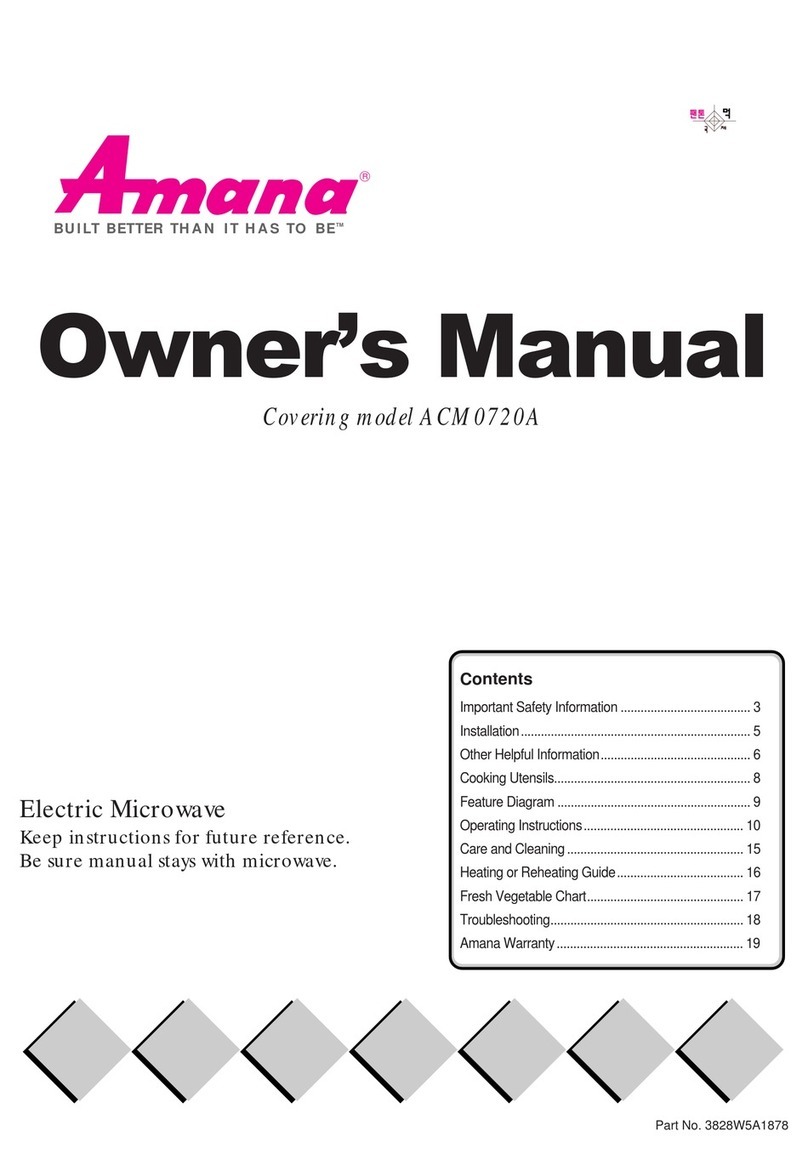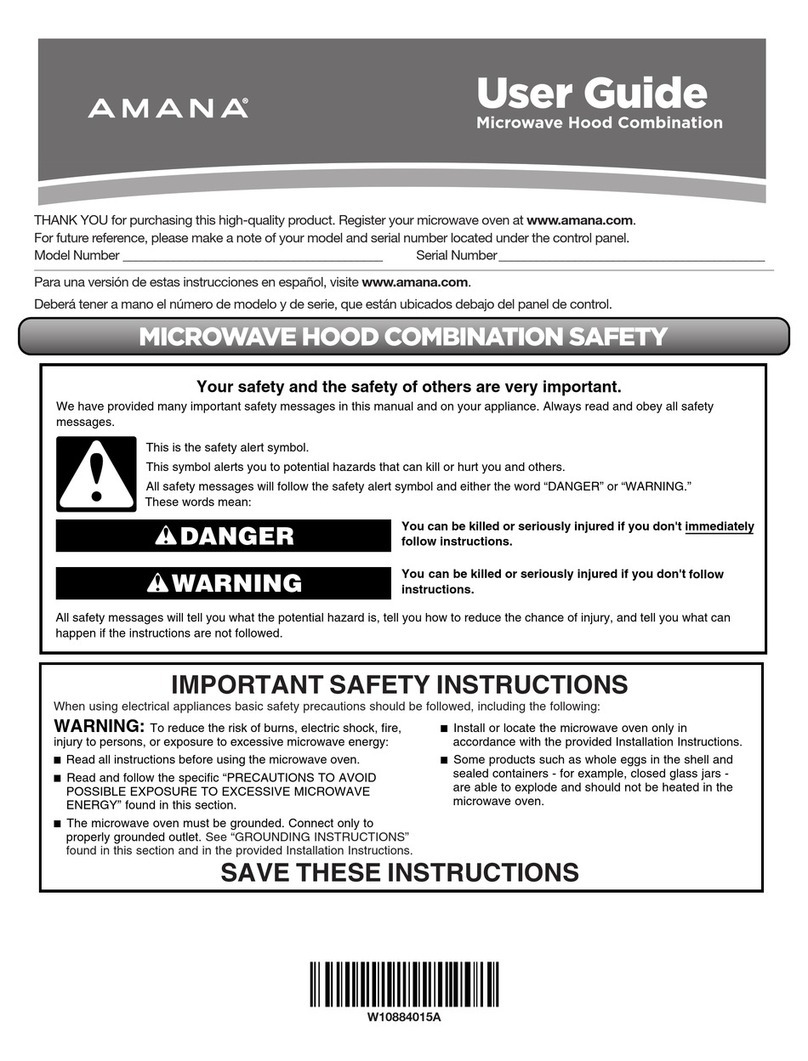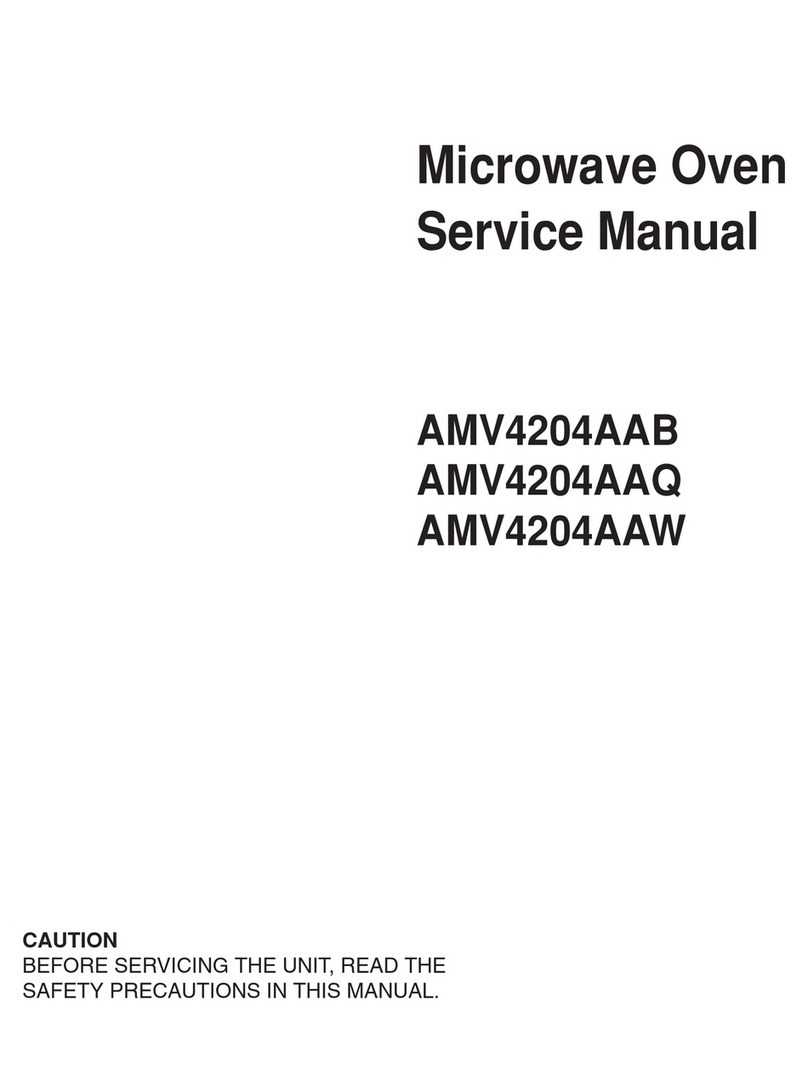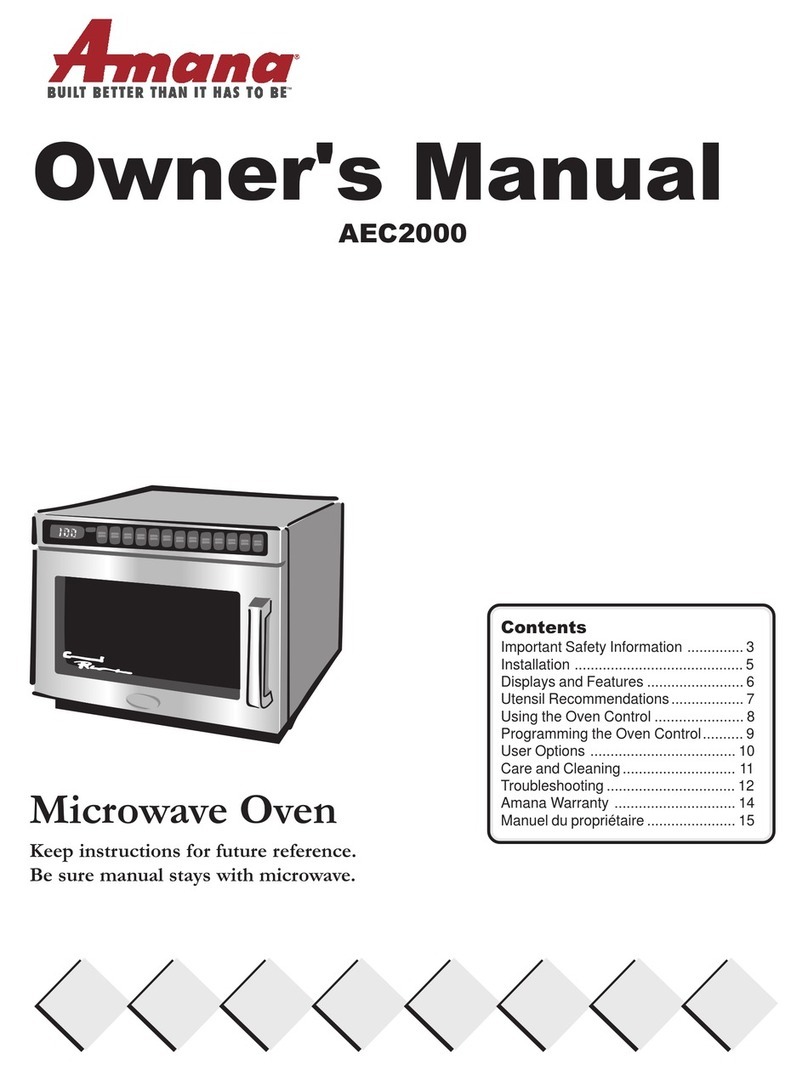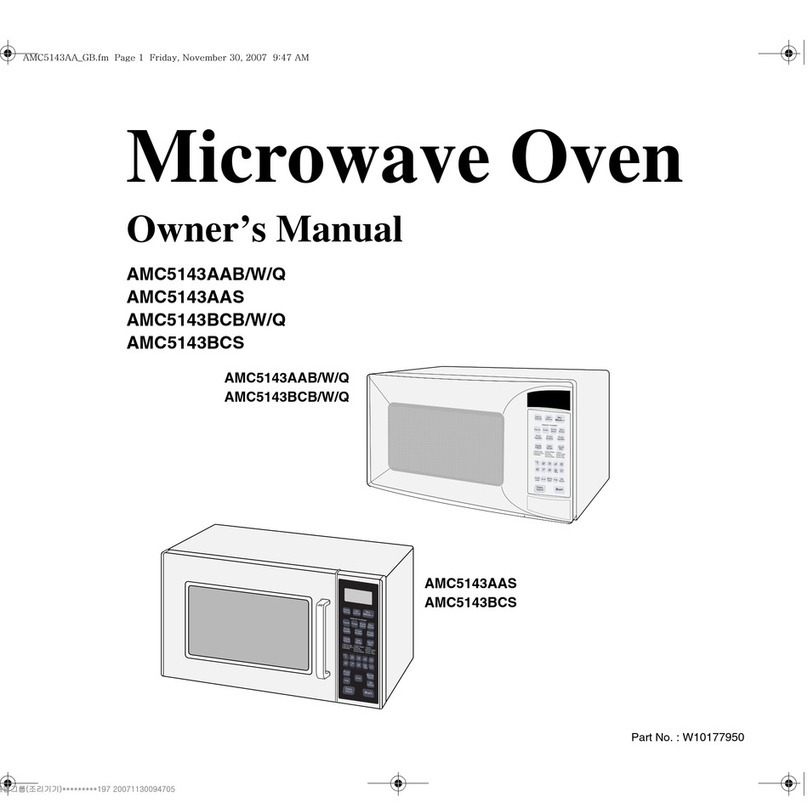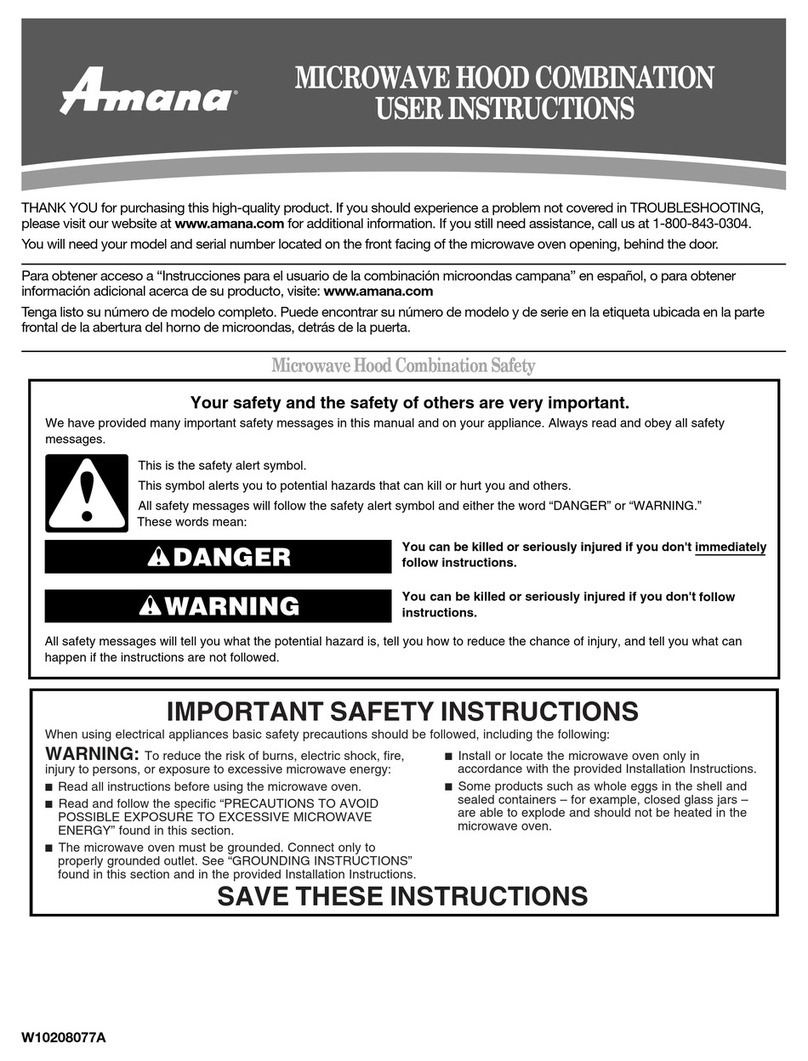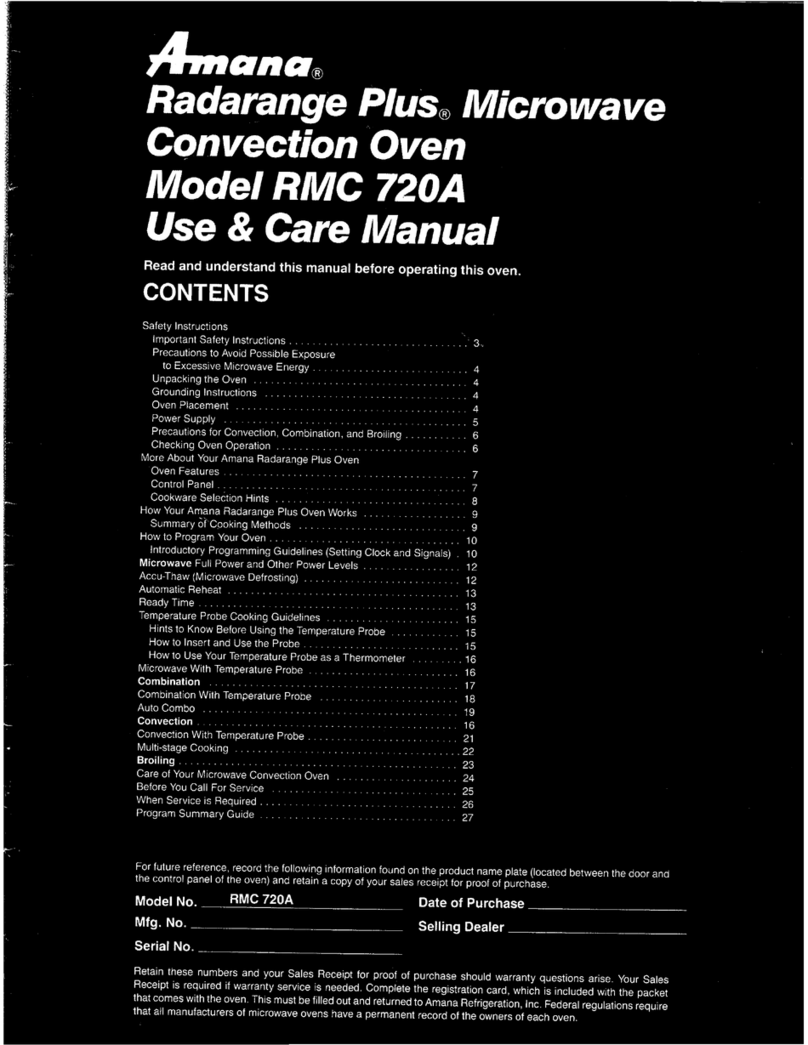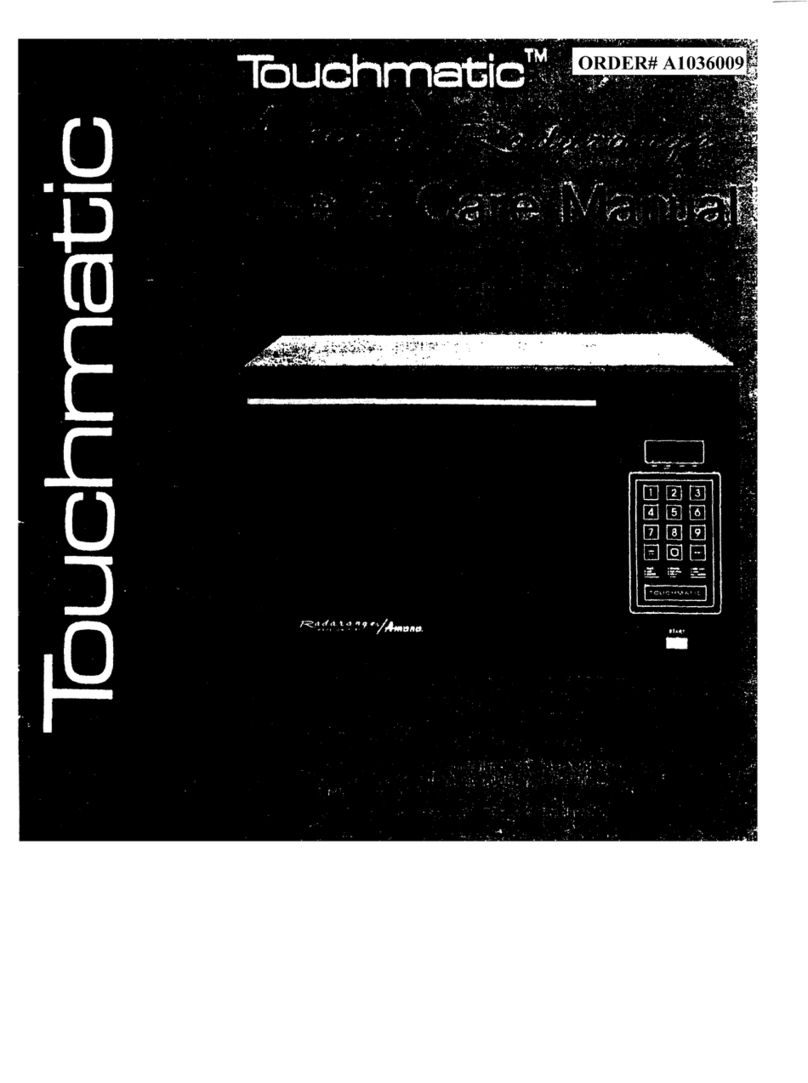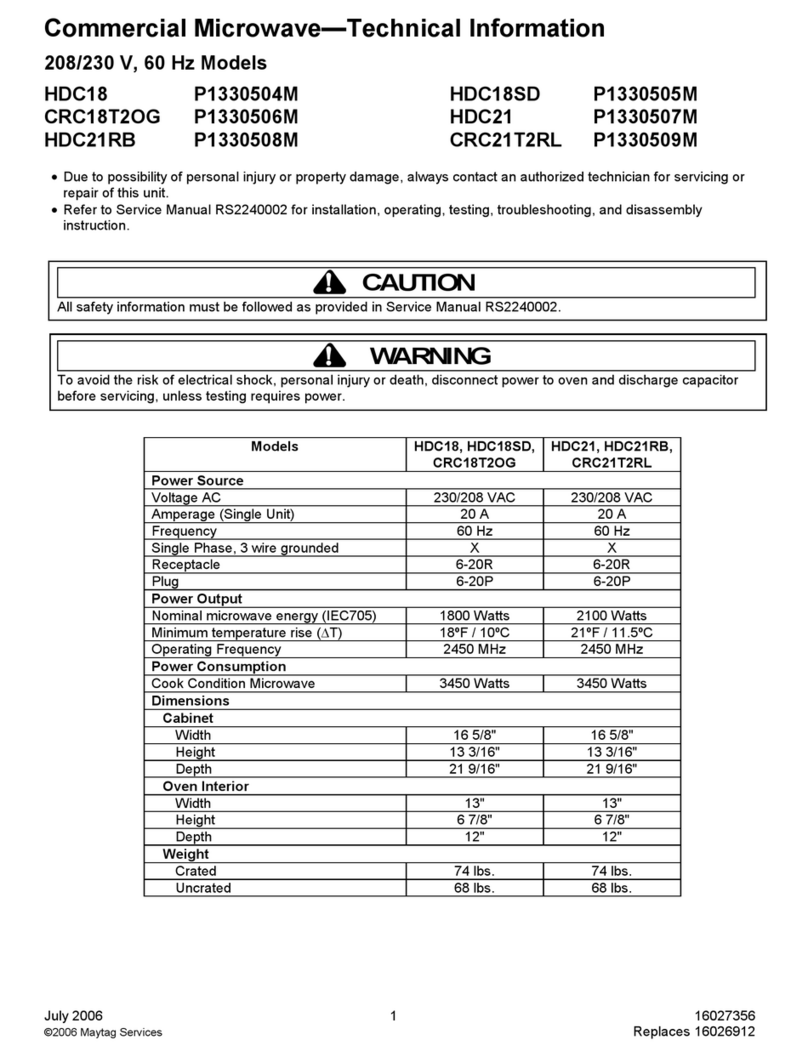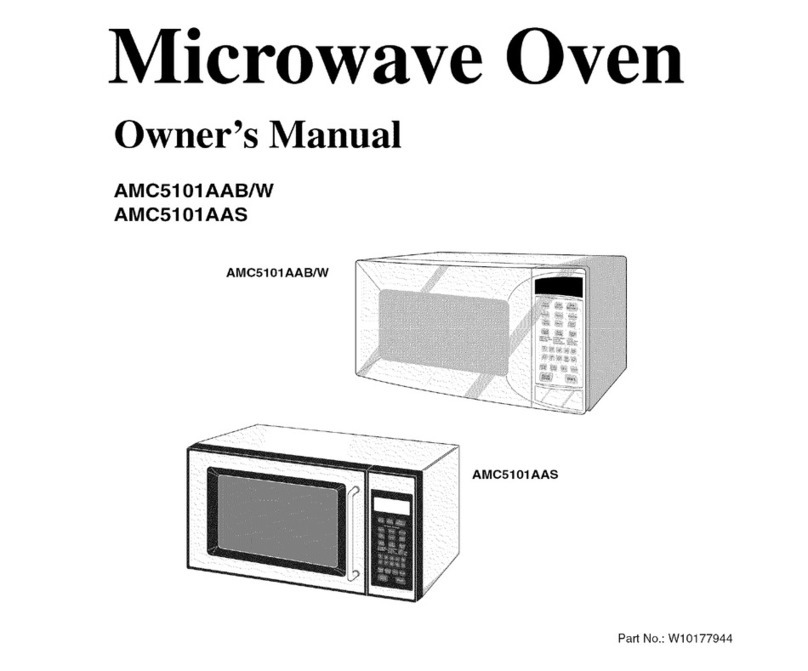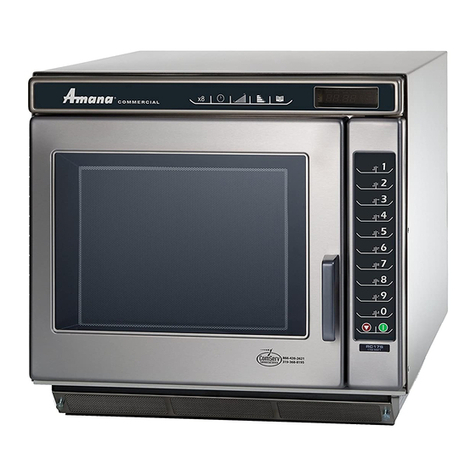
4
IMPORTANT SAFETY INSTRUCTIONS
SAVE THESE INSTRUCTIONS
a. DONOTovercookfood.Carefullyattendoven
when paper, plastic, or other combustible
materials are placed inside the oven to facilitate
cooking.
b. Removewiretwist-ties from paper orplastic
bagsbeforeplacingbag in oven.
c. If materialsinside the oven ignite,keep oven
doorCLOSED, turn oven off anddisconnect the
power cord, or shut off power at the fuse or
circuitbreaker panel.
d. DONOTuse the cavity for storage. DO NOT
leavepaper products, cooking utensils,or food
in the cavity when not in use.
WARNING
!
To avoid risk of fire in the oven cavity: WARNING
!
Liquids such as water, coffee, or tea are able to be
overheatedbeyondthe boilingpointwithoutappearing
to be boiling due to surface tension of the liquid.
Visiblebubblingorboilingwhenthe container is
removedfromthemicrowave ovenisnotalways
present.THISCOULDRESULT INVERYHOT
LIQUIDSSUDDENLYBOILINGOVERWHENA
SPOONOROTHERUTENSILISINSERTEDINTO
THELIQUID.To reduce the risk of injury to persons:
i) Do not overheat theliquid.
ii) Stir the liquid both before andhalfwaythrough
heating it.
iii) Do not use straight-sidedcontainers with narrow
necks.
iv) After heating, allow the container to stand in the
microwaveovenforashorttimebeforeremoving
thecontainer.
v) Use extreme care when inserting a spoon or
other utensil into the container.
8. Oventemperatureis at least 100°Fin convection
mode. Verify plastic, paper or other combustible
materialsare recommended by the manufacturerto
withstandtheminimumoventemperature.
9. When cooking with paper, plastic, or other
combustible materials, follow manufacturer's
recommendationson product use.
10. Do not use paper towels which contain nylon
or other synthetic fibers. Heated synthetics could
melt and cause paper to ignite.
11. Do not heat sealed containers or plastic bags
in oven. Food or liquid could expand quickly and
cause container or bag to break. Pierce or open
containerorbagbeforeheating.
12. Racks, utensils, rack guides, and oven surfaces
may become hot during or after use. Use utensils
or protective clothing, like pan grips or dry oven
mitts, when necessary to avoid burns.
13. Do not unplugoven immediately after use. Internal
fanmust cool oven toavoid damage of electrical
components.
14. Toavoidpacemaker malfunction, consult physician
orpacemakermanufacture about effects of
microwaveenergyonpacemaker.
1. Do not deep fat fry in oven. Fat could overheat
andbe hazardous to handle.
2. Do not cook or reheat eggs in shell or with an
unbroken yolk using microwave energy. Pressure
may build up and erupt. Pierce yolk with fork or
knifebeforecooking.
3. Pierce skin of potatoes, tomatoes, and similar
foods before cooking with microwave energy.
When skin is pierced, steam escapes evenly.
4. Do not leave oven unattended.
5. Do not use regular cooking thermometers inoven
whencookingin microwave or combination mode.
Most cooking thermometers contain mercury and
may cause an electrical arc, malfunction, or
damagetooven.
6. Do not use metal utensils in oven except when
recommended by microwave food manufacturers
or recipe requires metal utensils in convection or
combination mode. Heat food in containers
made of glass or china if possible.
7. Neverusepaper,plastic,or other combustible
materialsthat are not intendedfor cooking. If oven
temperature is high, material may ignite.
CAUTION
!
To avoid risk of personal injury or property damage, observe the following:
